Multisyllabic words can be challenging for students. Understanding the six types of syllables can help make these complex words much more manageable (and help you review and reteach phonics patterns). This post will describe a variety of engaging six syllable types activities that will help your 4th and 5th grade students decode and even spell multisyllabic words, including several exclusive email freebies.
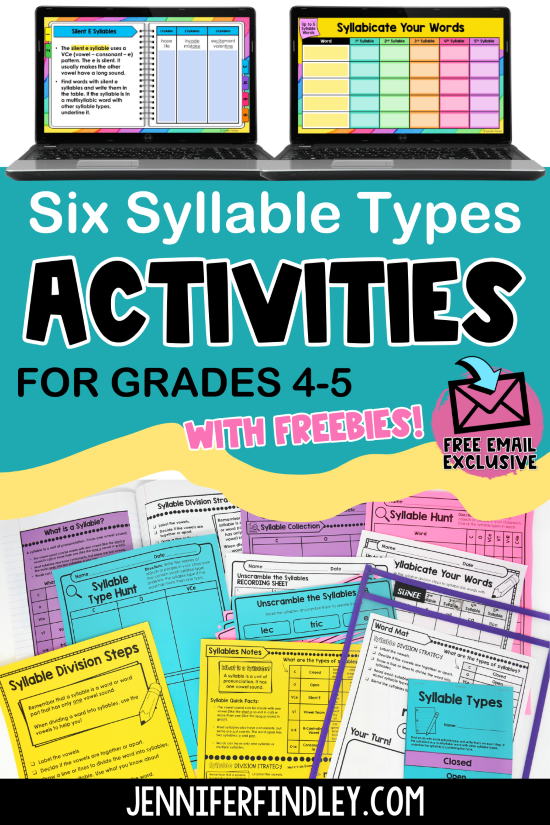
What Are the Six Syllable Types?
Syllable types refer to the different patterns or structures that syllables in words can have. Understanding and recognizing syllable types helps to predict the vowel sound in a given syllable.
Knowing syllable types helps students pronounce words correctly. This is because vowels can sound different depending on the syllable type. Knowing the syllable types can also help with encoding (spelling). If students hear a long vowel sound, they know to try an open syllable spelling, a silent e syllable, or a vowel team. If they hear a short vowel sound, it’s probably a closed syllable.
There are six to seven syllable types, depending on which curriculum or program you use:
- Closed Syllables
- Open Syllables
- Silent E Syllables
- Vowel Team Syllables
- R-Controlled Syllables
- Consonant + le Syllable
A 7th type would be a diphthong. Some programs split up vowel teams and diphthongs. Also, some programs teach Consonant + le as a Final Stable Syllable (the umbrella type) and include other syllables such as -tion and -ture.
Six Syllable Types Activities
Let’s look at some different activities that you can use while you are teaching the syllable types (and after for review).
1. Segment and Label Syllable Types in Multisyllabic Words
Segmenting and labeling syllable types reminds me of creating multiplication arrays. It is a hands-on way to help students master breaking apart and analyzing bigger words that is used until they have mastered this skill with fluency and automaticity (much like with multiplication facts).
The goal is always to have students visually break apart and analyze words and then recognize those words automatically by sight. However, segmenting words and labeling syllable types is a bridge to get them there.
This process can be done in a printable manner or digitally using Google Slides. 🖱️The editable slide to type in your own words can be downloaded for free by clicking here and signing up for the “Email Exclusive FREE Syllable Type Resources.”
2. Syllable Types Scavenger Hunt or Collection
After introducing each syllable type, you want students to be able to see the connection between your instruction and authentic reading. One way to do this is to have them go on a syllable hunt or collection. They can use any written text (provided by you or otherwise) to find the syllable type they have just learned.
You can even have students hunt around the room for objects they can find that have each syllable type.
Examples of objects around a classroom:
- globe – silent e
- map – closed
- paper – open/r-controlled
- marker – r-controlled/r-controlled
- eraser -open/open/r-controlled
- desk – closed
They can even “hunt” through students’ names for syllable types.
Examples (my sons):
Blake – silent e
Brody – open/open
Braven – open/closed
Tip: Do this after teaching at least the first three syllable types (closed, open, and silent e) to have more success.
3. Sort Syllables and Words by Type of Syllable
Anytime you can make learning hands-on is a win. Having student sort syllables (nonsense syllables, one-syllable words, or isolated/underlined syllables in multisyllabic words) by syllable type is a great hands-on way to have them practice identifying syllable types.
Here are some specific tips:
1. Add on each syllable type as you go. For example, students first sort by closed and open syllables. Then after silent e is introduced, they sort by closed, open, and silent e. And so on, until they have been taught and can identify and sort all six types.
2. If you want to provide additional practice with one specific syllable type, students can also sort syllables as examples or non-examples of a specific syllable type. For example, students could sort these syllables as closed syllables or not: rot, go, man, no, chat, shy, etc.
3. Connect to texts students are reading by pulling out the multisyllabic words beforehand. Write the syllables for those words on index cards, and have students read and sort them by type of syllable prior to reading. You could even write the syllables on the board or display them for students to write them as they sort instead of manipulating cards.
4. Encode (Spell) Multisyllabic Words (With or Without Support)
Encoding and decoding go hand in hand (or they should!). As you are introducing and teaching each syllable type, make sure and incorporate chances for students to practice their encoding skills with that specific syllable type.
One way to do this is to have students complete multisyllabic words with the focus syllable type. As seen by the example below, this can be done with picture support, with syllable options, or with meaning support.
This type of syllable activity would work great as a warmup activity.
5. Read Detached Syllables and Create Words
Longer words can be intimidating for some students. Detached syllable activities can help make multi-syllable words more manageable (and hands-on).
For this syllable types activity, follow these steps:
- Prepare a list of multi-syllabic words (these can be from texts you are reading or even spelling lists).
- Break each word into syllables.
- Present the syllables to students and have them combine them to create words.
The great thing about this activity is that you can make it as simple or as complex as your students are able to handle. For example, you can use three syllables to unscramble to form a 3-syllable word, you can use 4+ syllables, or you can even have a variety of detached syllables that students work form to create words (like having 8 different syllables that they can choose from to create different words).
6. Use Consistent Games and Activities to Reinforce Syllable Types
Students love games and activities, so any opportunity to incorporate them into student practice or even instruction is a good idea. Using consistent games and activities (where the directions stay the same but the words or content changes) will help reduce cognitive load and allow students to focus on the words.
My three go-to activities for syllable types are:
- Tic-Tac-Toe – This is a great partner activity that can even be played during 1:1 work with a student.
- Roll and Read – The flexibility of this activity allows it to be used for independent practice or partner practice.
- Search and Find – These make great early finisher activities and are a fun “grown-up” way to practice reading and finding words with specific syllable types.
🛒To purchase these syllable type multisyllabic word games and activities, click here.
7. Read Engaging Texts with the Focus Syllable Type
In order for phonics instructions to be effective, students need to be able to see the connection between the skills and patterns they are learning and the texts that they are reading. Students also need to be able to transfer the skills that they’re learning in isolation with words to connected texts.
This is also true for syllable type instruction. The best way to help make syllable type instruction “stick” is by having students read stories full of the specific syllable type. Make sure and provide plenty of opportunities for students to read texts that include the six syllable types.
8. Scoop Multisyllabic Words from Connected Text
One activity that will reinforce syllable types AND help students master multisyllabic words is to scoop multisyllabic words into syllables. You can have the words scooped into syllables prior to instruction or you can scoop the words with students.
Here is how this might look:
Teacher Scoops Word and Shows Students:
- Read each syllable (using the scoops as a guide). Discuss the syllable type.
- Combine all of the syllables into a word. Tweak the pronunciation as needed by flexing the vowel sounds.
Teacher Shows Word and Scoops with Students:
- Find the vowels and put a dot under them.
- Use flexible syllable division to try out different syllable scoops.
- Discuss the syllable type.
- Combine all of the syllables into a word. Tweak the pronunciation and scooping as needed.
9. Syllabicate Spelling and Vocabulary Words
Reinforce syllable types instruction with the words your students are learning as part of their spelling or vocabulary curriculum.
Have students break down (or syllabicate) each word (or select a few words) into its individual syllables. This can be done by clapping out the syllables, writing the word and physically dividing it into syllables with pencil slashes, or using other methods that help visualize or audibly recognize the syllables.
Then have students identify the syllable types in each word (closed, open, vowel-consonant-e, vowel team, r-controlled, consonant-le). This step helps students understand the relationship between the spelling of a word and its pronunciation.
Access Free Syllable Type Activities Here
To grab all of the email-exclusive free syllable type activities featured in this post, click here or on the GIF shown below. You will be redirected to a new page where you can enter your email for instant access to the activities and more resources to help your syllable type instruction.
Need Syllable Type Activities?
Click on the image below to grab my Mega Bundle of Teaching Six Syllable Types Activities. It includes all of the other resources shown in this post.
This discounted mega bundle includes:
1. Practice to explicitly teach each syllable type (and games and activities to reinforce them)
2. Sorts to sort syllables and words by syllable type
3. Syllable warmups to start your reading lessons (small group or whole group)
4. Multisyllabic word task cards to help students practice flexing sounds (set for variability)
5. Syllable type passages WITH lessons
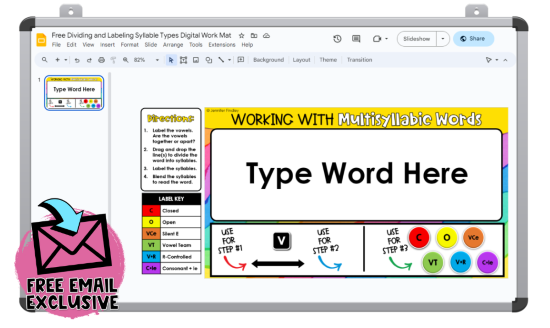
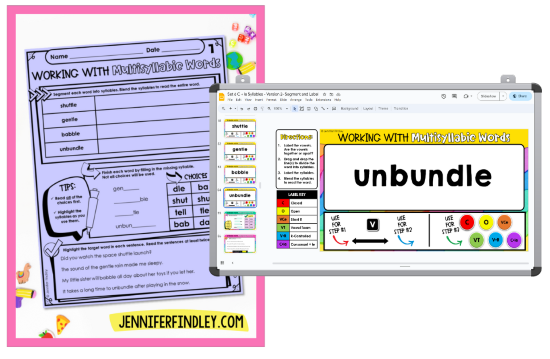
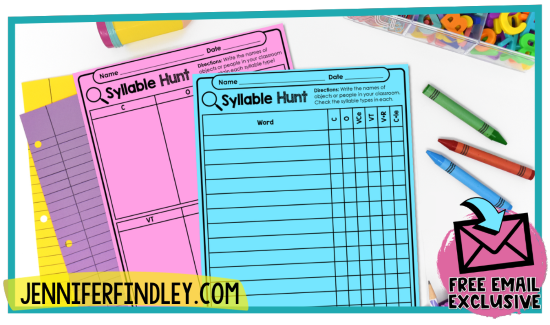
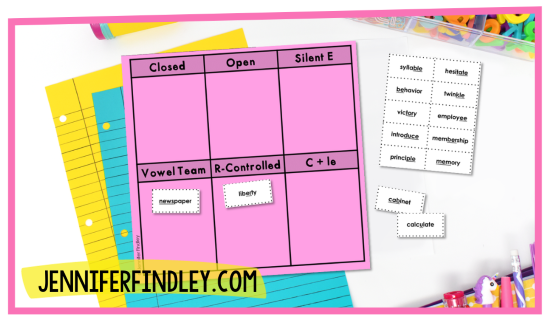
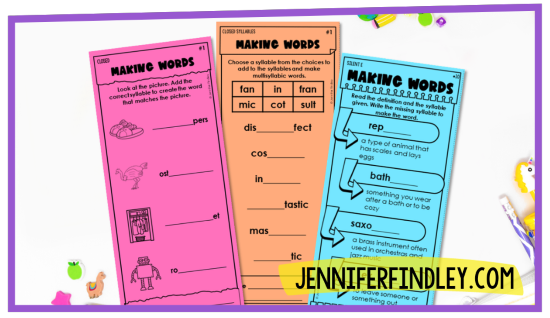
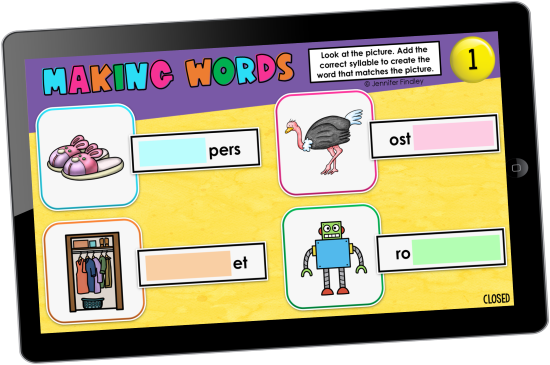
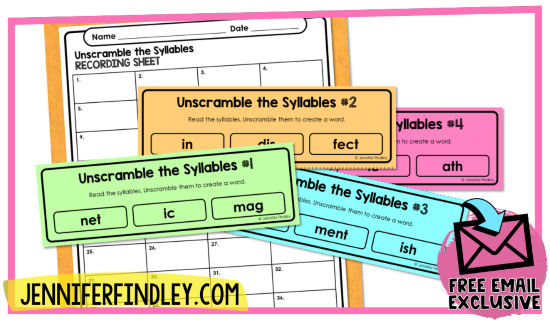
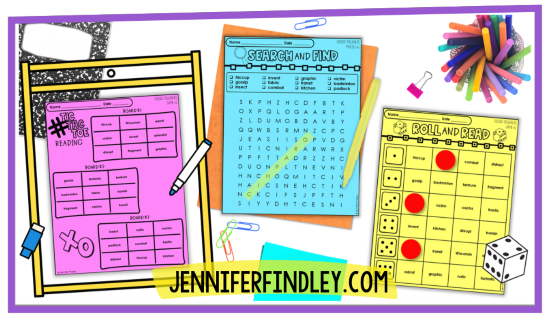
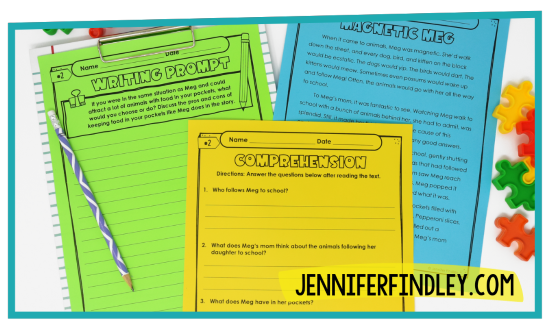
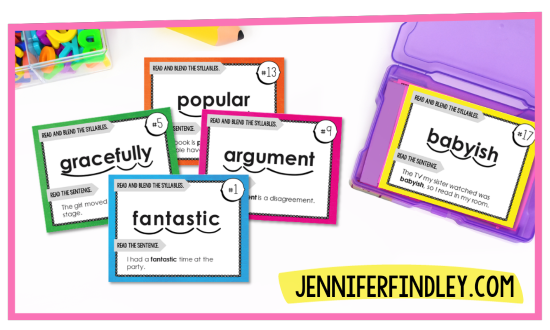
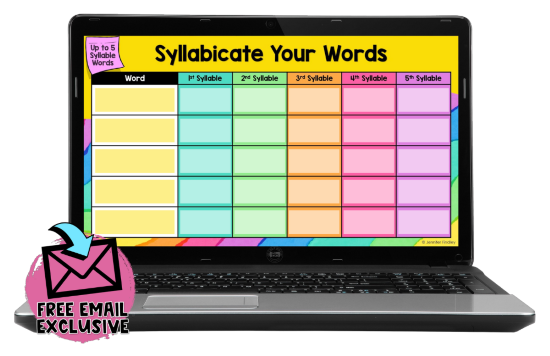
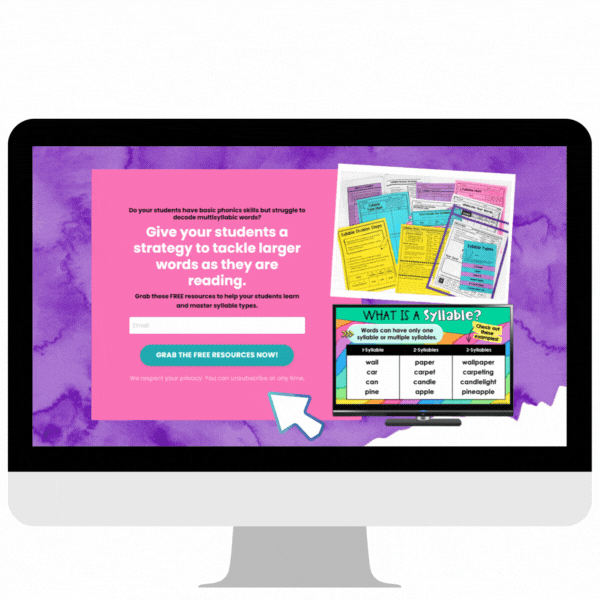
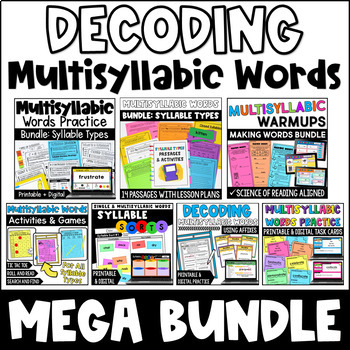







Leave a Comment